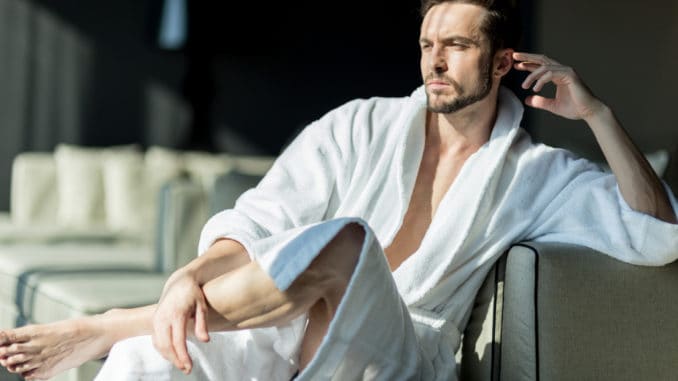
They call it the “killer lipid” because it seeps into the brain, forming amyloid plaques that lead to Alzheimer’s — but there’s a natural way to stop it from ever happening to you…
—-Important Message—-
Use the Kraepelin Method to neutralize the “killer lipid” and prevent Alzheimer’s
I discovered a way to burn up this killer lipid safely in the body, BEFORE it gets to the brain, and convert it into usable energy instead…
I call it the Kraepelin Method, and it’s completely natural and simple — something any man can do at home.
With the Kraepelin Method, the killer lipid is destroyed before it slips past the blood-brain barrier and forms amyloid plaques that cause Alzheimer’s.

———-
This is what really causes Alzheimer’s disease in men (and THIS prevents it)
In the aging brain, a few notable changes take place.
And the most salient of those is the presence of lipofuscin.
Lipofuscin is a non‐degradable material composed of tangles of proteins crosslinked by lipid peroxidation products.
Lipid aldehydes, such as hydroxynonenal, are formed as a result of lipid peroxidation…
These covalently bond to nitrogen-containing protein side chains such as lysine and histidine.
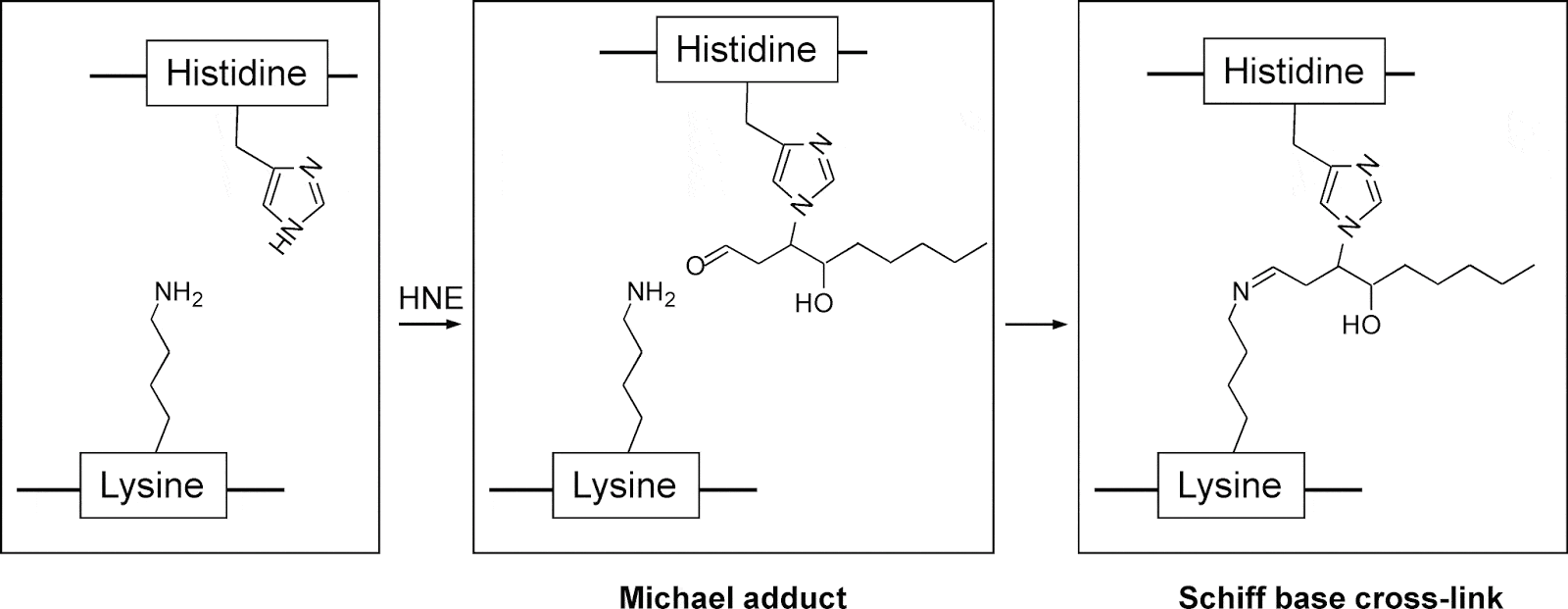
This is catalyzed by iron and PUFA – prevented by vitamin E.
The result is a non‐degradable material called lipofuscin that crowds out the intracellular space.
In dividing cells, non‐degradable lipofuscin is diluted through cell division.
But in post-mitotic cells and in nerves, it builds up.
And it increases with aging…
Even within the same species, the rate of accumulation is directly correlated with longevity.
“In such cells, the amount of lipofuscin may increase dramatically; in some motor neurons of human centenarians, lipofuscin occupied 75% of the cytoplasmic volume.”
The result is a lowered metabolism in neurons…
Their inner volume is greatly reduced – displaced by lipofuscin.
So much lipofuscin leads to less space for metabolic activity.
The cell desperately tries to degrade this stuff, yet it cannot.
The cell’s main organelle for degrading larger proteins is the lysosome.
These are small vesicles filled with enzymes. And they have a method of lowering pH – catalyzing protein breakdown.
Lysosomes are like a cell within a cell, and can be viewed under a high‐power microscope.
In addition to reducing the formation of lipofuscin by taking vitamin E, limiting iron, and limiting polyunsaturated fatty acids (PUFAs), there are a few more things you can do.

Over the years, it’s become clear that intracellular waste builds up faster in Alzheimer’s disease compared to control subjects.
You could almost consider this a form of accelerated aging.
Intracellular recycling of proteins happens constantly – in some cells more than others.
Cells of the brain and heart have a relatively low rate of recycling.
When a crosslinked protein cannot be broken down, it causes the accumulation of proteins…
A cellular traffic jam…
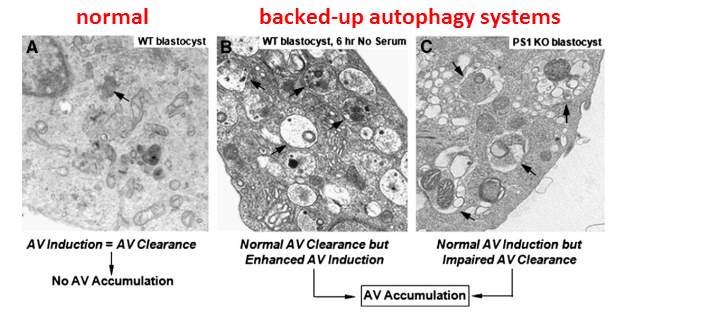
Although not generally talked about these days, aluminum can actually crosslink proteins forming neurofibrillary tangles…
And that is the one true characteristic feature of Alzheimer’s disease.
This had been demonstrated in rabbits, cats, and monkeys.
To this day, nothing besides aluminum has been shown to be capable of reproducing all the defining features of Alzheimer’s.
“These observations suggested that the normally efficient autophagic process in neurons is stalled in Alzheimer’s disease.”
Seeing Alzheimer’s under this paradigm (of reduced autophagy) suggests a hypothesis:
Can the induction of autophagy reverse this disease? Can it degrade the inclusion bodies?
There has actually been work done in this area:
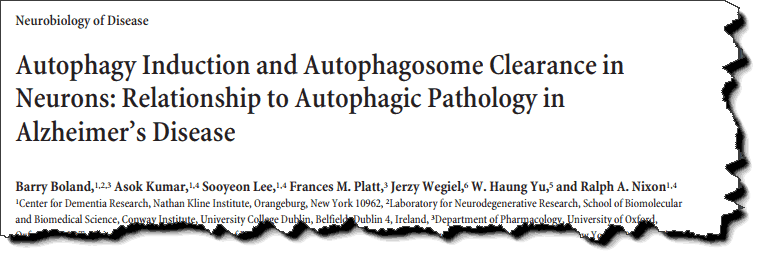
Up to this point, a few lines of thought converged to the dogma that “neurons in the brain cannot do autophagy.”
But these were simply the result of primitive assumptions.
“The scarcity of recognizable autophagosomes and other…intermediates in healthy neurons has raised the possibility that baseline autophagy in neurons is normally low…”
Although normally done at a relatively low rate (compared to other cells), autophagy really can be induced in brain cells.
Autophagy is a process in which very large cellular components are engulfed by autophagosomes.
And then those fuse with lysosomes that donate enzymes to break down the cargo.
Even entire mitochondria can be digested this way.
This is in contrast to the smaller‐scale micro-autophagy and proteasome degradation… the minor recycling processes.
These researchers used a cell transfected with DNA that codes for a fluorescent protein attached to a unique autophagosome protein…
Then they looked for changes:

They showed beyond all doubt that brain neurons can undergo autophagy…
…which is normally kept in check by dietary leucine.
The cell actually has a leucine sensor protein – which senses only this one amino acid.
In the absence of leucine, autophagy is initiated.
This process happens through the mTOR pathway.
So using the drug rapamycin – as the experimenters did – will also work.
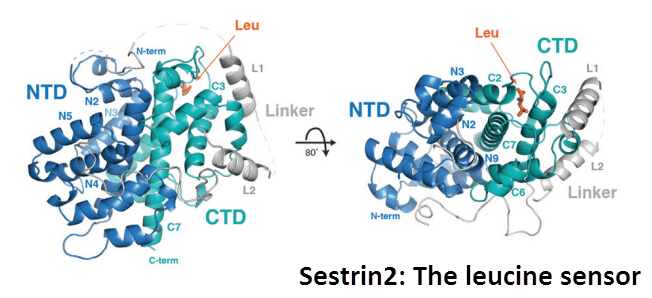
Restricting leucine alone has been shown to induce autophagy.
So, from this and other evidence, you’d expect leucine restriction (or intermittent fasting) would induce autophagy.
And autophagy could help break down and recycle intracellular proteins before they have a chance to irreversibly polymerize.
“We conclude that macro-autophagy is constitutively active and highly efficient in healthy neurons and that the autophagic pathology observed in Alzheimer’s disease most likely arises from impaired clearance…”
Since lipofuscin is crosslinked by reactive lipids and builds up over time, you’d almost have to think that the longer it persists the harder it would be to break down.
Lipofuscin also traps iron.
And iron gives it a catalytic surface for enhanced lipid peroxidation.
This would lead to a self-amplifying, feed-forward, and exponential accumulation curve.
So perhaps if we fast two days a month, we can reduce lipofuscin, stave off dementia, and lose weight:

Up until this point, autophagy in the brain had only been shown to occur in vitro, leaving doubt as to whether it could occur in vivo.
For example, there could always be enough leucine in the blood coming from autophagy elsewhere to keep it in check.
The brain always gets the first choice of nutrients during a fast.
“…but current dogma holds that the brain escapes this effect, perhaps because it is a metabolically privileged site.”
By using the same technique as in the previous study (the fluorescent protein), these researchers showed brain autophagy in rats – after a fast of only forty‐eight hours:
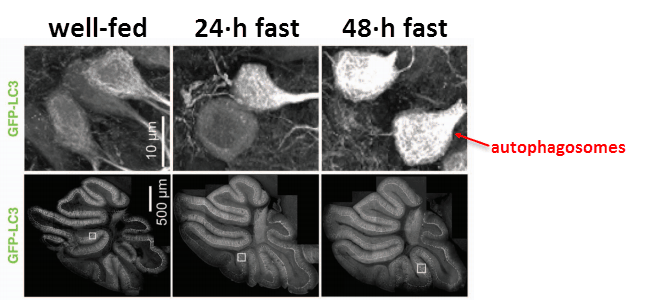
But it must be said that rats have a quicker metabolism…
So this would correspond to a longer time period for a human.
Nonetheless, there is now little doubt that autophagy can be induced in the brain during a fast.
Could this perhaps slow lipofuscin formation?
And perhaps even enhance its breakdown?
“Our data demonstrate that, contrary to current dogma, food restriction causes a rapid and profound upregulation of autophagy in the brain.”
Maybe this is why philosophers such as Pythagoras fasted…
Maybe it’s why the classic fasting physicians of the previous century (such as Herbert Shelton and John Tilden) remarked on increased clarity of thought after a fast.
Despite the unpleasant sounding nature of fasting for a few days every other week, it doesn’t sound like a bad idea from a scientific standpoint.
Autophagy is tissue-specific and occurs relatively late in muscle cells.
We lose negligible amounts of muscle during a three‐day fast… Bodybuilders routinely do this to shed fat before competition.
—-Important Message—-
73% more blood flow “down there”
Imagine the flood gates opening and blood rushing into your penile chambers…
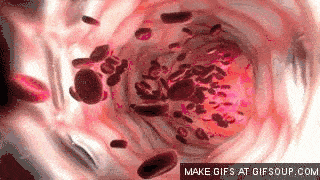
…reaching every nook and cranny and making your member grow and get stiff and engorged.
It’s all thanks to simple, healthy supplements that clear out the penile chambers and increase blood flow…
It’s a simple supplement formula that any man can use to get big, strong, firm erections whenever they want…
Start experiencing 73% more penile blood flow today using this simple formula
———-

Alirezaei, M. "Short-term fasting induces profound neuronal autophagy." Autophagy (2010)
http://www.tandfonline.com/doi/abs/10.4161/auto.6.6.12376
Boland, Barry. "Autophagy induction and autophagosome clearance in neurons: relationship to autophagic pathology in Alzheimer's disease." Journal of Neuroscience (2008)
http://www.jneurosci.org/content/28/27/6926.short
Nixon, R. "Autophagy failure in Alzheimer's disease—locating the primary defect." Neurobiology of disease (2011)
https://www.sciencedirect.com/science/article/pii/S0969996111000337
Terman, Alexei, and Ulf T. Brunk. "Lipofuscin: mechanisms of formation and increase with age." Apmis (1998)
http://onlinelibrary.wiley.com/doi/10.1111/j.1699-0463.1998.tb01346.x/full
Brunk, Ulf T., and Alexei Terman. "Lipofuscin: mechanisms of age-related accumulation and influence on cell function." Free Radical Biology and Medicine (2002)
https://www.sciencedirect.com/science/article/pii/S0891584902009590
